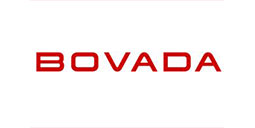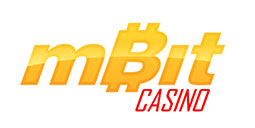The first paper, that appeared to be edited after the ICO even on a virtually rolling basis of the Petro, had the money immobilized within a ERC20 token which would use the Ethereum payment railing. The buyer’s guidesaid that the coin would be. The discrepancy between the two documents wasn’t explained before the February 20 pre-sale date when both Maduro and the NEM Foundation confirmed via Twitter that the Petro did really function as a NEM application.
The Trump administration invited its allies to follow a similar path and in August 2017 announced additional sanctions against Venezuela in reaction to this political controversy surrounding the election of President Maduro and substantial evidence of human rights abuse. This hampering of this economy, which is expected to contract 15 percent by the end of the calendar year, turned the situation dire. In November, the government announced that it could no longer support its foreign debt of $105 billion, “approximately ten occasions Venezuelan foreign exchange reserves,” and that a restructuring was imminent.
Venezuelan Crisis
Back in March, Time Magazinesupported the rumor which Russia had secretly worked with Venezuela to style that the Petro as a means of bypassing U.S. sanctions. It was suspected that this is the intended goal, but affirmation that the coin was a Russian collusion injured its legitimacy as well as its international reputation as a financial investment.
Although the India deal could possibly be the one to come to public knowledge, it is only one supply of its kind. Venezuela has petroleum jelly partners, especially China, that are convinced to miss the shortcomings of the program . With the quantity of doubt surrounding the Petro, it appears natural that Venezuela would try to bolster confidence and lure engagement using whatever way necessary.
Petro is going to be a tool for Venezuela’s economic stability and financial freedom, coupled with a ambitious and worldwide vision for the creation of a more powerful, healthier and more powerful international financial system.
In December of 2017, Venezuela President Nicolás Maduro announced that his administration was likely the planet’s first digital money issued by a sovereign nation’s launch. In theory, the country’s oil reserves back the money totaling nearly 300 billion barrels, using a coin representing a barrel onto a foundation.
The reaction from the crypto area has been raving. Despite the tech, most have found it challenging to classify the Petro as anything other than a oil protection that bears a resemblance than it will to Bitcoin. In practice, how the PTR differs in the bonds issued by PDVSA, the state-owned oil company, is challenging to comprehend.How the price of this Petro was to be determined gained criticism. The government set the first offer that was Petro against the price of a barrel of Venezuelan crude oil USD, with the price tag, then, being decided by the barrel price from the day before. The equation is provided by the paper:
By the end of 2017, Venezuela found itself in an unfortunate financial position; economic ostracism as a result of U.S. sanctions had closed off access to nearly all traditional means of financial rescue. Given the country’s brief collection of friends and the character of its economic disaster, it resorted (unsurprisingly) to using its most rewarding and abundant commodity in tandem using the prevailing excitement that continues to surround cryptocurrency.The Release
Published at Thu, 03 May 2018 16:26:05 +0000
Venezuela has allegedly offered the Indian government a wonderful deal: a 30 percent discount on crude oil imports. The only condition being that the oil must be bought via the newly minted cryptocurrency of the nation.
To add to the list of troubles, the country inflation has caused a dire lack of paper money. The USD gained 3,400 percent against the Bolívar in 2017 and is currently projected to get yet another 13,000 percent by this year’s end. Although companies have been forced to quit accepting the Bolívar as payment in favor of international currencies, banks have been forced to limit cash withdrawals into the equivalent of only a couple of pennies per day.The sloppiness with which the Petro was brought to market was greatest exhibited when President Maduro announced without providing a single means of confirmation that the Petro had increased $ 735 million. Many in the press at this statistic, ignoring it as “farcical” and a direct effort to mislead investors. In his post “Venezuela’s cryptocurrency is one of the worst investments ever,” Matt O’Brien in the Washington Post expressed the apprehension and disbelief held by a lot toward the future prospect of this new coin.
The lead up to and aftermath of the launch of this Petro has been fairly chaotic, with communication and conflicting reports creating mass confusion concerning the details of the new strength.In 2017, 8% of India’s total oil imports came from Venezuela at a cumulative cost of $5.5 billion. The past months have revealed that the government is far from comfortable with currencies, staying deeply suspicious of its own illicit utility, although the regulatory position has yet to be explained. But this really is oil: It’s safe to say this, in the past, nations have done much worse compared to neglect their own objections to Receive their hands on a million barrels of discounted oil.
What Can the Sale Mean?
The problem for this rationale is that, since oil production is a nationalized sector, a barrel of Venezuelan oil’s price is determined by the government. No framework exists to make sure that the government will abide by those guidelines though this would in training follow the world market price. How current costs are calculated as well as those of the 17.7 million coins which have yet to be released has drawn concern.
The launch of the money comes since the government of Maduro attempts to tackle a range of pressing issues that have pushed Venezuela to a crippling downturn. As a country heavily determined by oil exports, the dramatic drop in oil price reach the South American country particularly hard. The recent fall has been striking with increased production and reduced ingestion plummeting the world price from in 2012 above $ 125 per barrel to less than $ 30 . The IMF forecasts that, by the end of year, the Venezuela will have experienced a GDP decline of almost 50 percent since 2013.
Venezuela has ensured its buyers who the Petro will take the weight of legal tender, suitable as exchangeable for the nation money and payment for taxes and fees, the Bolívar. Reports also have said that Venezuela is looking to the possibility of controlling food distribution and incorporating the money into its mandatory state ID system, for asserting government benefits, the Identidad, that is currently used.
Venezuela Offers India Discounted Oil to Boost Petro Confidence - July 2025
EXPERTLY REVIEWED
MOBILE FRIENDLY
FAST PAYOUTS
- CasinoRatingBonusVisit Casino
Get your 100% Match Bonus up to $1000!
200% match bonus up to 2000
Up to 5 BTC
100% match bonus + 180 free spins
Get up to 1 BTC on First Deposit!
Welcome bonus up to 1.5BTC + 250 free spins
Get your 5 BTC Welcome Bonus
Top Rated







Search
Casino List
- Bovada Casino
- 7bit Casino
- Bitstarz Casino
- Sun Palace Casino
- Ignition Casino
- Tangiers Casino
- Nitrogen Sports Casino
- Casumo Casino
- Fortunejack Casino
- Mars Casino
- Mbit Casino
- Cafe Casino
- Drake Casino
- Grand Fortune Casino
- CryptoReels Casino
- Wild Casino
- Betchain Casino
- Oshi Casino
- Bitcoin Penguin Casino
- Joe Fortune Casino
- Vegas Casino.io



